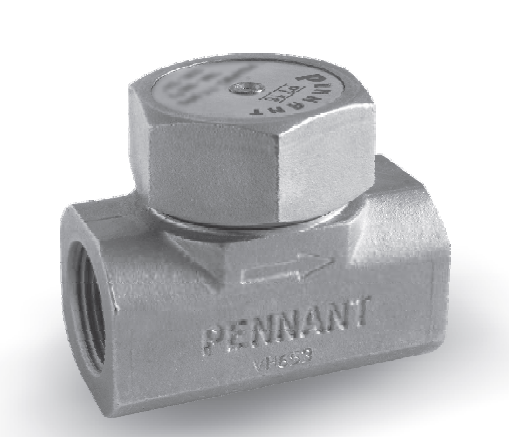
Pennant PT16 Thermodynamic Steam Trap
The Model P16 thermodynamic steam trap without integral strainer is compact, light weight design, in full stainless steel construction. Better corrosion and wear resistance ensured by the total stainless steel construction. It meets the requirements of quick response applications in the steam system. The disc and seat are hardened to withstand continuous and prolonged operation. Condensate entry below the disc, concentric to the disc / seat ensures a clean and parallel lift of the disc with reference to the seat, eliminating localized wear and tear.
Request a Quote
Availability:
In stock
SKU
PE00400W
The Model P16 thermodynamic steam trap without integral strainer is compact, light weight design, in full stainless steel construction. Better corrosion and wear resistance ensured by the total stainless steel construction. It meets the requirements of quick response applications in the steam system. The disc and seat are hardened to withstand continuous and prolonged operation. Condensate entry below the disc, concentric to the disc / seat ensures a clean and parallel lift of the disc with reference to the seat, eliminating localized wear and tear.
Ideal for fluctuating loads and pressures.
Perfect shut-off, no steam loss.
Product Features:
The trap will operate in any position, but the preferred installation is in the horizontal plane with the cap on the top. Full port isolating valves should be installed upstream and downstream of the trap for safe maintenance. Always open isolation valves slowly until normal operating conditions are achieved to avoid system shocks.
Ideal for fluctuating loads and pressures.
Perfect shut-off, no steam loss.
Product Features:
- -Sizes: ¼", ⅜", ½", ¾" & 1"
- -Screwed (NPT) connections
- -Maximum allowable pressure 600 psig
- -Maximum allowable temperature 800 ºF
- -Maximum operating back pressure at the outlet should not exceed 80% of the inlet pressure
- -Minimum differential pressure for satisfactory operation 3.5 psi
The trap will operate in any position, but the preferred installation is in the horizontal plane with the cap on the top. Full port isolating valves should be installed upstream and downstream of the trap for safe maintenance. Always open isolation valves slowly until normal operating conditions are achieved to avoid system shocks.




